
Activity Reports
Growing sea squirts
August 9, 2012
Aomori, Iwate, and Miyagi are the major prefectures for producing sea squirts (ascidian). 70% of these are from Miyagi prefecture, and 90% of the prefecture’s naturally planted sea squirts are harvested in Yagawa and Samenoura in Ishinomaki City, by Samenora Bay.
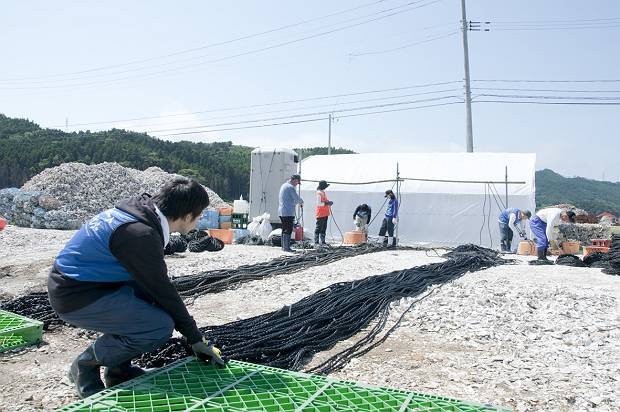
The northeastern coast, where the tsunami scooped out the face of the mountains and destroyed the embankment, is even now in a state with only temporary measures in place. It is said to take another 5 to 10 years before construction is completed in the areas where the ground needs to be raised.
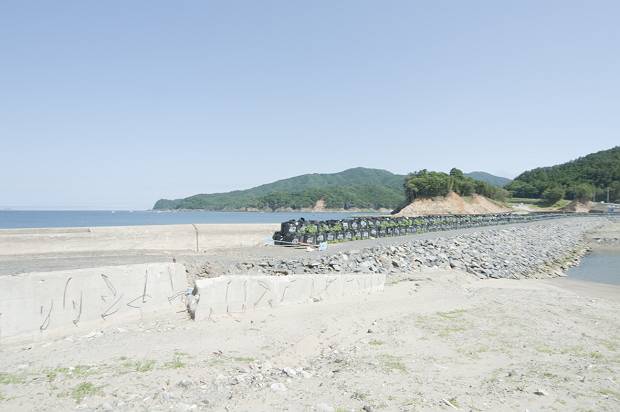
Constructing full-scale buildings for settling down again for the long-term decades cannot happen until this ground work is completed. Meanwhile, in order to continue living by the shore despite the damage, fishing is the residents’ only way to survive.
Of course some choose to relocate and find a new job: this decision is just as difficult as those who decide to start their fishing and farming from scratch all over again. The Peace Boat fishery and coastal support team has conducted activities to support those who chose to be committed to the coastal recovery in this ordeal.
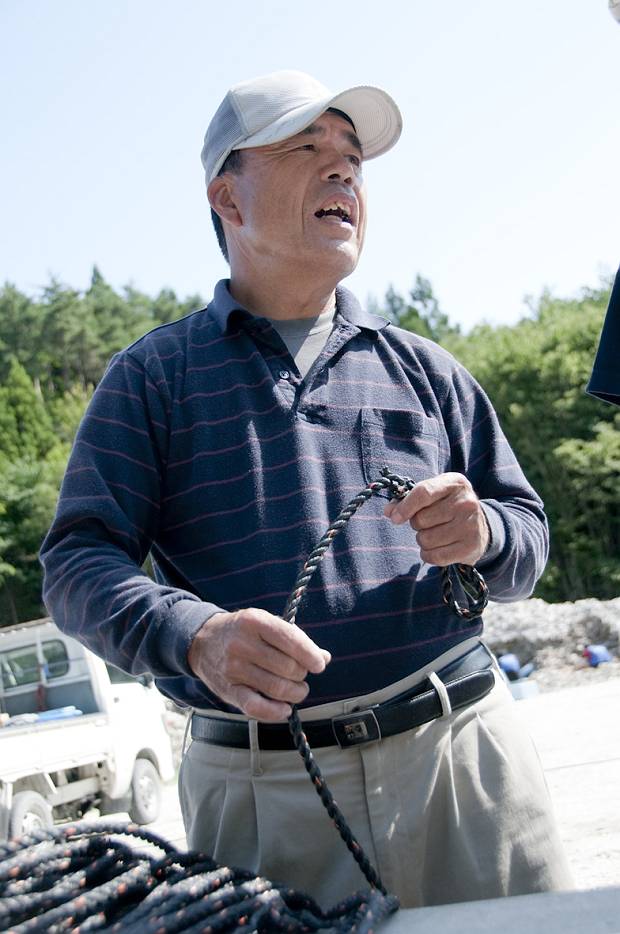
A member of the sea squirt farming association.
Yagawa on the Oshika Peninsula is known for having the top market share in shipping sea squirts, sending them throughout the whole of Japan. Probably many of the sea squirts eaten by people all over the country until now have been from this part of the coast.
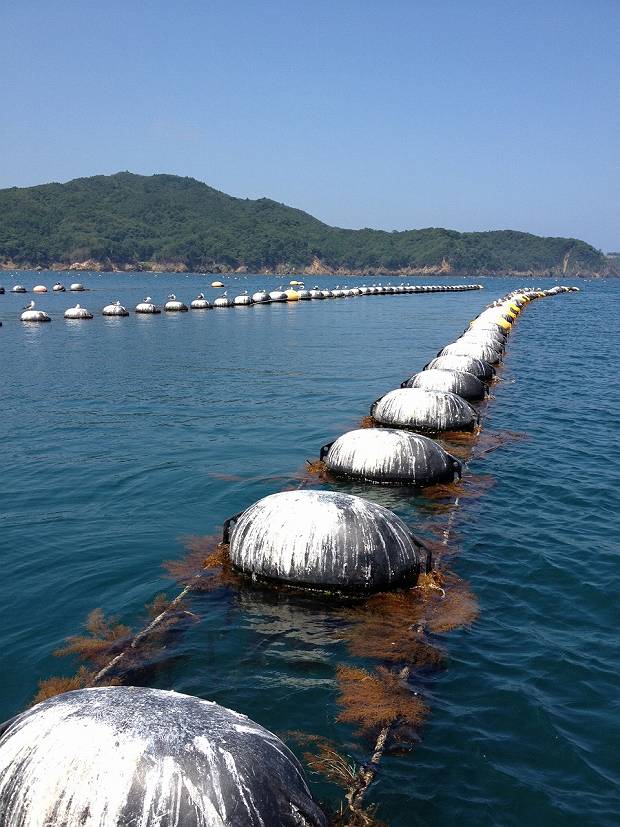
Longline farming is in place to grow many sea squirts – this is a photo of a farming raft.
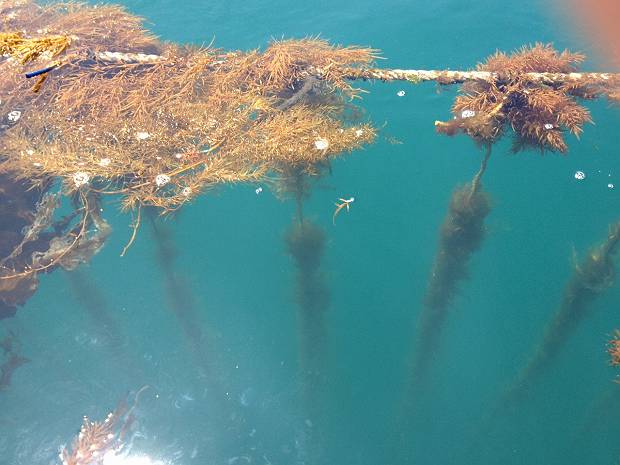
Oyster shells are tied in a raw, so-called “Karakko-zashi” to sink in the sea.
Here are the sea squirt seeds that were put underwater 6 months ago. The crop last year was zero due to the tsunami, and this year estimates are for 1/5th of an average crop, due to resource constraints. Simply shipping sea squirt seeds is not enough to help the future business recovery – parent sea squirts must also be grown.
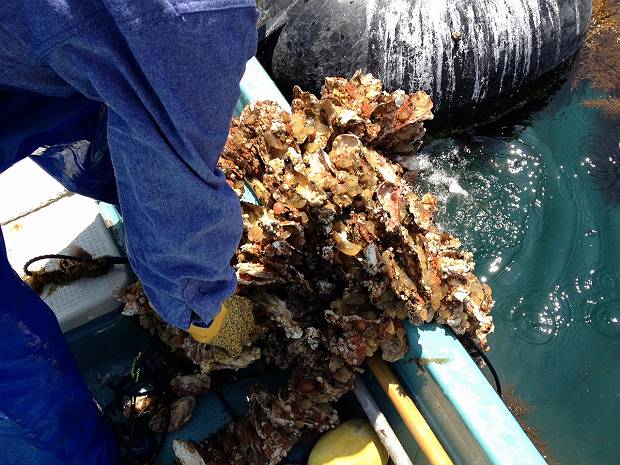
The sea squirts stuck on oyster shells are shipped to manufacturers once they grow big enough to be confirmed by sight. The oyster shells are then hung down from farming rafts for 2-3 years, until they become adult enough to be harvested.
Since May this year, a total of 673 volunteer working days have been contributed for the Karakko-zashi work for the Yagawa sea squirt farming. We have just reached the target goal of 45,000 oyster shells.
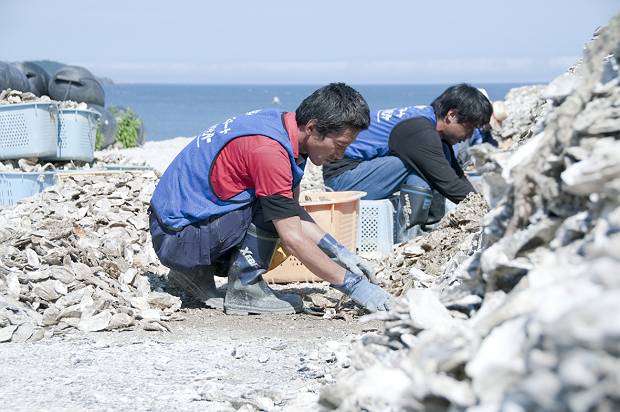
Baby sea squirts growing slowly but strongly give us hope and energy for the future. Fishermen and volunteers continue to work moving forward, keeping in mind the future fully grown squirts!
Photos: Suzuki Shoichi
TAGS: Disaster Relief • fishing industry • Ishinomaki • Ogatsu • Oshika Peninsula • Peace Boat • peaceboat • Relief • Tsunami • Volunteer • volunteering • Volunteers


